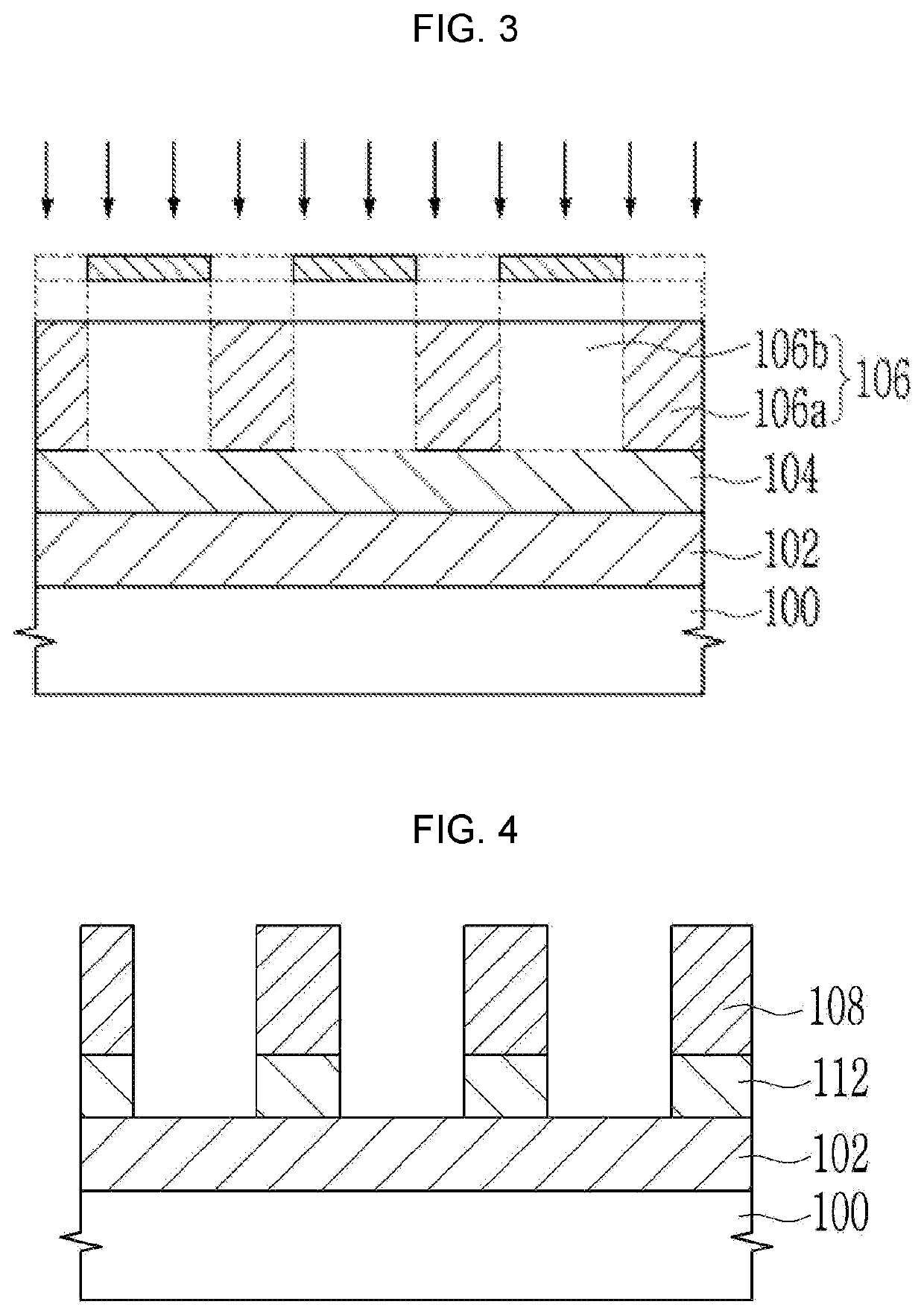Semiconductor photoresist composition and method of forming patterns using the composition
- Summary
- Abstract
- Description
- Claims
- Application Information
AI Technical Summary
Benefits of technology
Problems solved by technology
Method used
Image
Examples
synthesis example 1
tin Compound 1
[0118]25 ml of acetic acid was slowly added to a compound represented by Chemical Formula A-1 (10 g, 25.6 mmol) in a dropwise fashion at room temperature and then, heated under reflux at 110° C. for 24 hours.
[0119]Subsequently, after decreasing the temperature down to room temperature, the acetic acid was vacuum-distilled to obtain Organotin Compound 1 represented by Chemical Formula B-1 (Yield: 90%).
synthesis example 2
tin Compound 2
[0120]25 ml of acrylic acid was slowly added in a dropwise fashion to a compound represented by Chemical Formula A-2 (10 g, 25.4 mmol) at room temperature and then, heated under reflux at 110° C. for 24 hours.
[0121]Subsequently, after decreasing the temperature down to room temperature, the acrylic acid was vacuum-distilled to obtain Organotin Compound 2 represented by Chemical Formula B-2 (Yield: 50%).
synthesis example 3
tin Compound 3
[0122]25 ml of propionic acid was slowly added in a dropwise fashion to a compound represented by Chemical Formula A-3 (10 g, 23.7 mmol) at room temperature and then, heated under reflux at 110° C. for 24 hours.
[0123]Subsequently, after decreasing the temperature down to room temperature, the propionic acid was vacuum-distilled to obtain Organotin Compound 3 represented by Chemical Formula B-3 (Yield: 95%).
PUM
 Login to View More
Login to View More Abstract
Description
Claims
Application Information
 Login to View More
Login to View More - R&D
- Intellectual Property
- Life Sciences
- Materials
- Tech Scout
- Unparalleled Data Quality
- Higher Quality Content
- 60% Fewer Hallucinations
Browse by: Latest US Patents, China's latest patents, Technical Efficacy Thesaurus, Application Domain, Technology Topic, Popular Technical Reports.
© 2025 PatSnap. All rights reserved.Legal|Privacy policy|Modern Slavery Act Transparency Statement|Sitemap|About US| Contact US: help@patsnap.com



